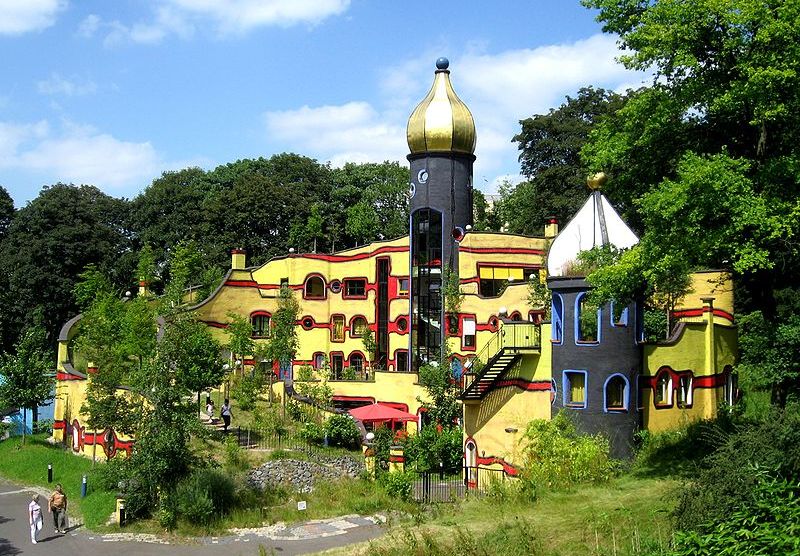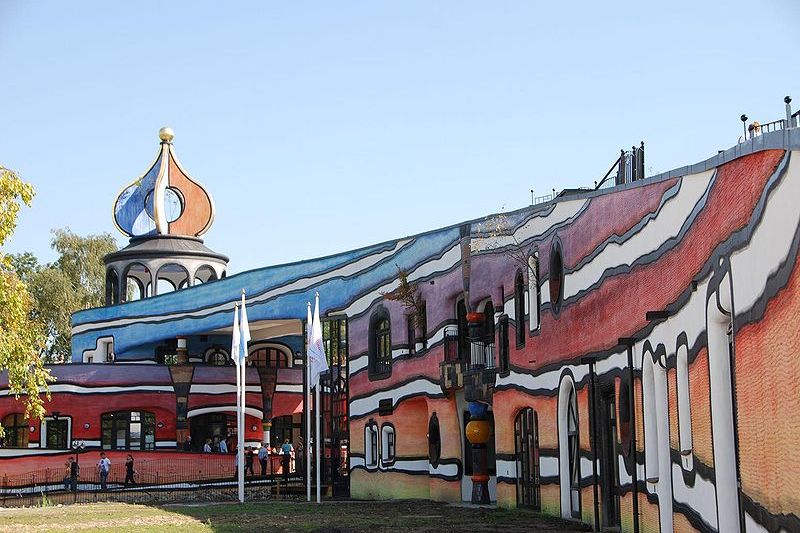http://www.dailyartfixx.com/2012/12/15/friedensreich-hundertwasser-1928-2000/
http://www.strangebuildings.thegrumpyoldlimey.com/2011/08/in-spotlight-architect-friedensreich.html



One of Hundertwasser's oft used motifs was the integration of his buildings with nature and the use of vegetation on the roofs of his structures. Perhaps the best example of this aspect of his work is the Hotel Rogner Bad Blumau, Bad Blumau, Austria pictured to the left.
This aspect of his style is best summed up with another couple of his quotations; in this case they our favorites and without doubt they are quotes that also provide insight into his philosophy on life and spirituality:
"I’ve worked a great deal with grass roofs, putting soil on top and having things grow, but there is something strange in this, more than ecological. It is a religious act to have soil on your roof and trees growing on top of you; the act reconciles you with God, with nature, maybe not Christian or Jewish monotheism, but something wider, older - a very ancient wisdom."
and again:
"The true proportions in this world are the views to the stars and the views down to the surface of the earth. Grass and vegetation in the city should grow on all horizontal spaces - that is to say, wherever rain and snow falls vegetation should grow, on the roads and on the roofs. The horizontal is the domain of nature and wherever vegetation grows on the horizontal level man is off limits; he should not interfere. I mean taking away territories from nature, which human beings have always done."
In addition to his use of color and avoidance of straight lines which are common to all of his projects many also include another common element; the "crowning" of his creations with cupolas or "onion domes". The two Ronald McDonald Houses designed by Hundertwasser demonstrate this and are shown below. They are located in Essen, Germany and Valkenburg, Netherlands.
 |  |
During the course of his career Hundertwasser did not appear to ever restrict himself to any one type of project or even show any leaning to a particular type of building; a characteristic that most architects do seem to have. In fact the range of projects he embraced was very broad and extends from hotels and apartment complexes to residences and business premises and on to industrial plants and even public toilets. He managed to infuse all of his projects with his trademarks of color, vibrancy and fun even when the subject of his design was decidedly unglamorous; take for example the two plants he designed in Osaka, Japan the Maishima Incineration Plant and the Maishima Sludge Center.
No comments:
Post a Comment